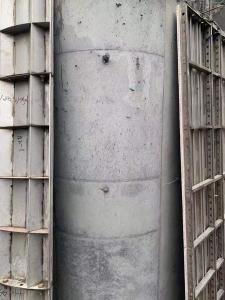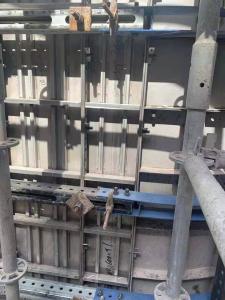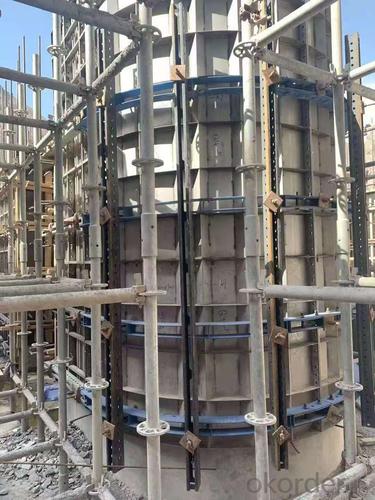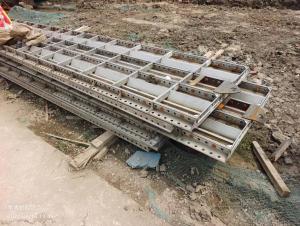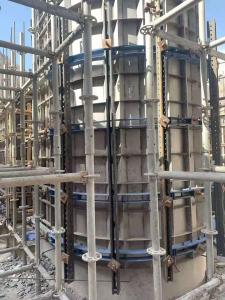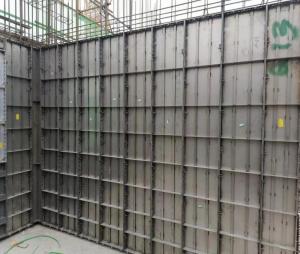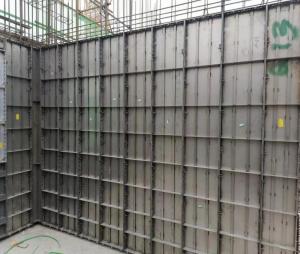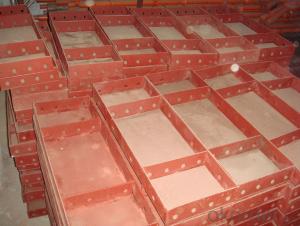High quality column steel formwork,metal formwork, Stainless Steel Formwork
- Loading Port:
- Shanghai
- Payment Terms:
- TT or LC
- Min Order Qty:
- 1 set
- Supply Capability:
- 1000000 set/month
OKorder Service Pledge
OKorder Financial Service
You Might Also Like
Stainless steel formwork
Replaceable size aluminum formwork :400X1200mm , 400X1500mm
PRODUCT SPECIFICATIONS
Panel thickness 120mm
Extremely strong and rigid
Fully compatible with Tricon system
Large size panels
Limited number of parts
High pressure resistance, minimum 100kn/m2
Long life expectancy
Stainless although magnetic sheets
Advantages:
1 Stainless steel formwork, 100% follow the design of aluminum alloy formwork system, it is interchangeable, compatible and can be used together with aluminum formwork at the same time .
2 (The maintenance of the floor or wall is simple and convenient, clean and smooth, easy to remove the mold, and the surface is beautiful.)
Integrated with the thermal insulation structure, the construction will be finished is fast, the efficiency is improved, no release agent is required, the wall has good flatness after de-moulding, no leveling is required, labor cost and time are saved . The construction speed of 5-6 floors a month shortens the construction period and saves Various expenses of the construction general contractor
3Long service life, many turnover times, high recycling value
The number of turnovers is large, especially the characteristics of no dust, no need to brush or less mold release agent, and the characteristics of low renovation costs will bring unlimited optimistic prospects to it.
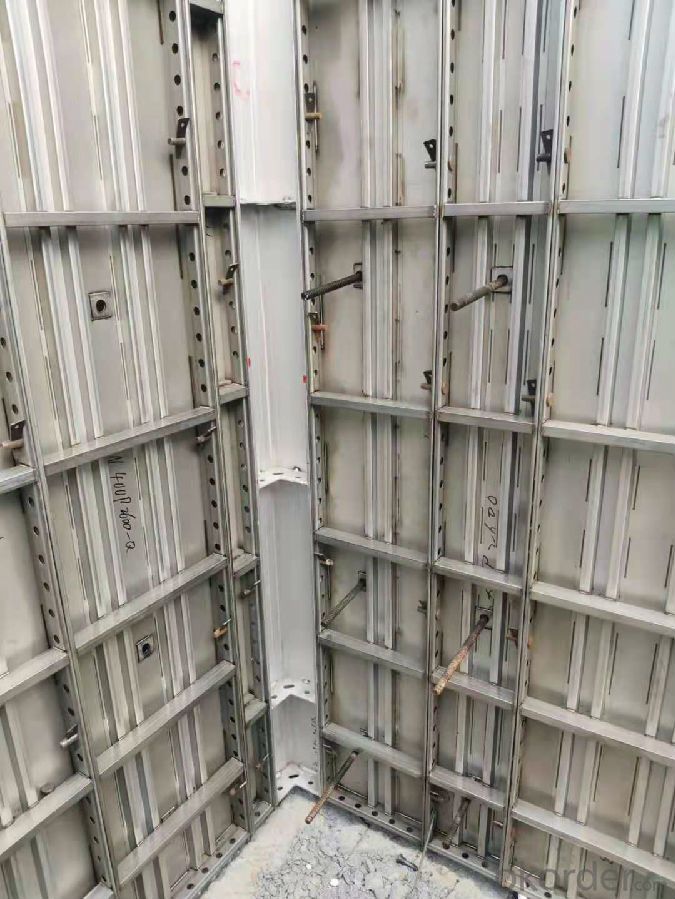
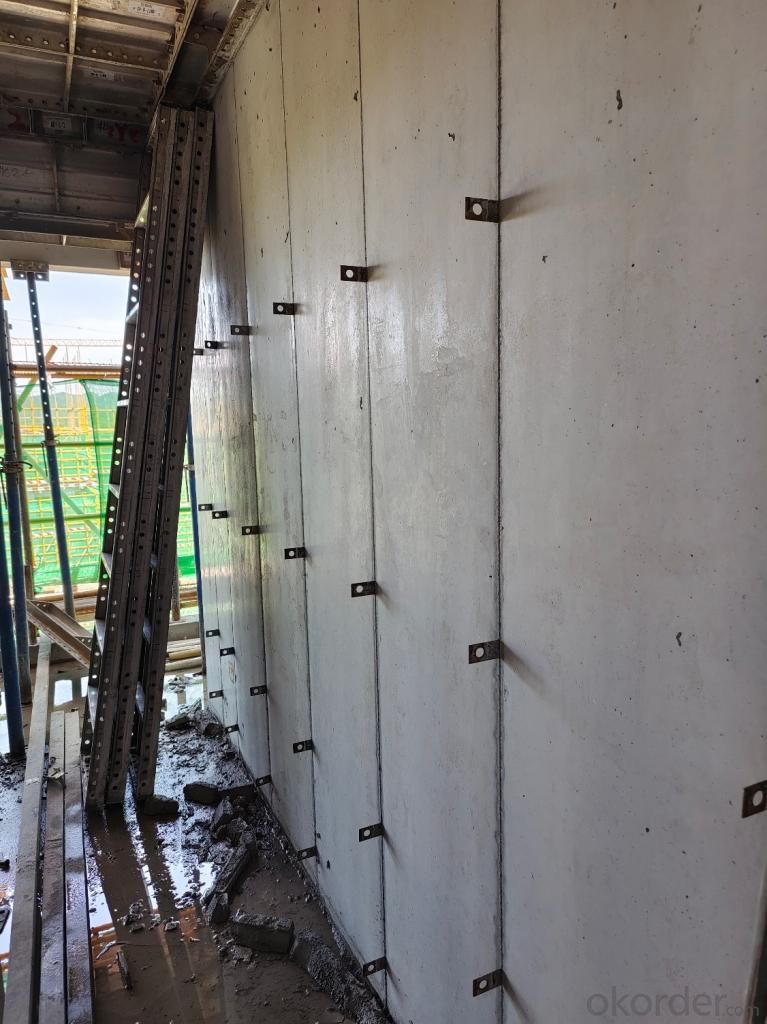
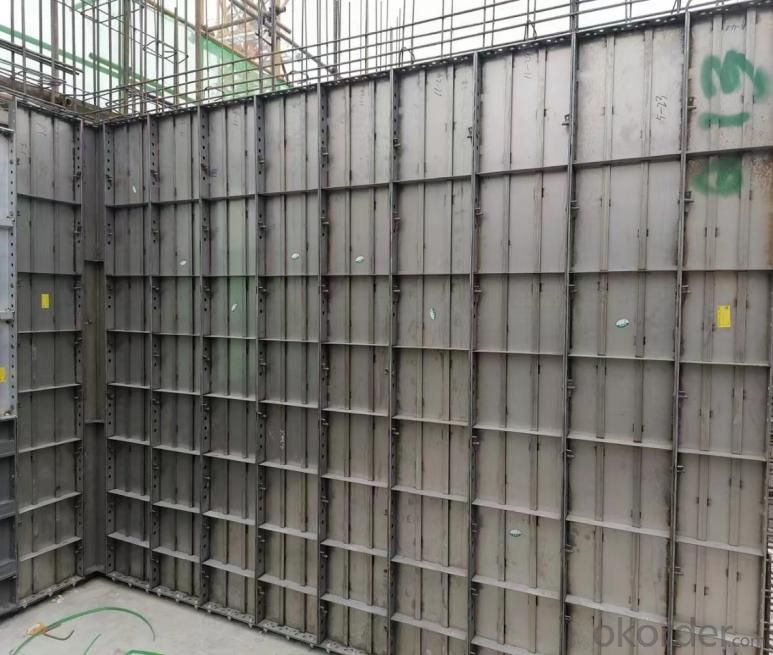
- Q: What are the different types of coatings used for steel formwork panels?
- There are several types of coatings commonly used for steel formwork panels, including epoxy, polyurethane, and galvanized coatings. Epoxy coatings provide excellent chemical resistance and durability, making them suitable for harsh environments. Polyurethane coatings offer good abrasion resistance and flexibility, making them ideal for formwork panels that require frequent reuse. Galvanized coatings provide corrosion protection by applying a layer of zinc on the steel surface, making them suitable for outdoor or high-moisture applications.
- Q: How does steel formwork affect the overall acoustics of the building?
- Steel formwork does not directly affect the overall acoustics of a building as it is primarily used as a temporary structure during construction. However, the choice of materials used for permanent building elements, such as walls, floors, and ceilings, can significantly impact the acoustics of the building.
- Q: What is the maximum load that steel formwork can bear?
- The maximum load that steel formwork can bear depends on various factors such as the thickness and quality of the steel, the design and construction of the formwork, and the specific application or intended use. It is advised to consult the manufacturer's specifications, engineering calculations, or professional advice to determine the exact maximum load that a particular steel formwork can withstand.
- Q: How does steel formwork contribute to the quality of the concrete finish?
- Steel formwork plays a crucial role in ensuring the quality of the concrete finish. Firstly, steel formwork provides a strong and rigid framework that holds the concrete in place during the pouring and curing process. This prevents any movement or deformation of the concrete, resulting in a smooth and even finish. Additionally, steel formwork offers better dimensional stability compared to other types of formwork materials. It does not warp or distort under the pressure of the wet concrete, ensuring accurate and consistent shapes and dimensions. This is particularly important for structures that require precise measurements, such as beams, columns, or walls. Moreover, steel formwork allows for better control over the surface finish of the concrete. The smooth and non-absorbent surface of steel minimizes the risk of air bubbles or voids forming on the concrete surface. This results in a visually appealing finish with reduced imperfections. Furthermore, steel formwork provides excellent resistance to moisture and chemicals present in the concrete mix. This prevents the formwork from being damaged or deteriorated, ensuring a clean and unblemished concrete finish. It also allows for easy removal of the formwork once the concrete has cured, without leaving any residues or marks on the surface. Lastly, steel formwork can be reused multiple times, making it a cost-effective and sustainable choice. The ability to reuse the formwork ensures consistent quality in subsequent concrete pours, as the same set of formwork will provide the same level of support and accuracy. This eliminates the need for frequent investments in new formwork materials, reducing overall project costs and environmental impact. In conclusion, steel formwork significantly contributes to the quality of the concrete finish through its strength, dimensional stability, control over surface finish, resistance to moisture and chemicals, and reusability. Its use ensures a smooth, accurate, and visually appealing concrete surface while providing durability and cost-effectiveness to construction projects.
- Q: Are there any specific considerations for using steel formwork in areas with high traffic loads?
- There are various factors to take into account when using steel formwork in areas with high traffic loads. Firstly, it is crucial to carefully assess the strength and durability of the steel formwork to ensure it can withstand the heavy loads and constant traffic. Steel formwork is renowned for its robustness and load-bearing capacity, making it suitable for such applications. However, it is important to select the appropriate type and grade of steel that can endure the specific traffic loads in the area. Secondly, it is imperative to entrust the design and construction of the formwork system to experienced professionals who understand the requirements of high traffic loads. Adequate reinforcement and bracing should be incorporated to enhance the strength and stability of the formwork structure. This may involve utilizing additional steel supports or beams to distribute the loads more effectively. Moreover, the connections and joints between different formwork elements should be meticulously designed and constructed to ensure they can withstand the heavy traffic loads without any failures. Welding or bolting techniques may be employed to enhance the structural integrity of the formwork system. Additionally, regular inspection and maintenance of the steel formwork should be conducted to identify any indications of wear and tear or damage caused by the high traffic loads. Any damaged or weakened sections should be promptly repaired or reinforced to avoid any safety hazards. Lastly, it is crucial to consider the impact of the high traffic loads on the poured concrete. The concrete mix and pouring techniques should be carefully chosen to ensure they can withstand the dynamic loads caused by heavy traffic. Reinforcement measures such as using steel rebar or fiber reinforcement can also be considered to augment the strength and durability of the concrete. In conclusion, when employing steel formwork in areas with high traffic loads, it is essential to consider the strength and durability of the formwork, design and construction techniques, connections and joints, regular inspection and maintenance, as well as the impact on the concrete. By taking these specific considerations into account, the steel formwork can provide a secure and dependable solution for construction projects in high traffic areas.
- Q: How does steel formwork accommodate openings and penetrations in the concrete?
- Steel formwork can accommodate openings and penetrations in the concrete through various methods. One common method is by using prefabricated steel form panels that have pre-cut openings or penetrations. These panels can be easily assembled and aligned to create the desired shape and size of the opening or penetration required in the concrete. Another method is by using adjustable steel formwork systems that allow for flexibility in creating openings and penetrations. These systems often have modular components that can be adjusted or rearranged to accommodate different shapes and sizes of openings or penetrations. In some cases, steel formwork may also use removable form inserts or sleeves. These inserts or sleeves are placed within the formwork during the casting of concrete and are later removed once the concrete has set, leaving behind a void or opening. Additionally, steel formwork can also incorporate various accessories such as hinged or sliding formwork elements, which can be adjusted to create openings or penetrations. These accessories provide additional flexibility in accommodating different design requirements. Overall, steel formwork offers great versatility in accommodating openings and penetrations in concrete construction due to its strength, durability, and ability to be easily adjusted or modified to meet specific project needs.
- Q: How does steel formwork handle high concrete pressures?
- Steel formwork is able to handle high concrete pressures due to its inherent strength and rigidity. Steel is a durable and robust material that has the ability to withstand significant loads and pressures without deforming or collapsing. It ensures that the formwork structure remains stable and secure, even when subjected to the high pressures exerted by the poured concrete. This makes steel formwork an ideal choice for construction projects where high concrete pressures are anticipated.
- Q: How does steel formwork handle different concrete shrinkage characteristics?
- Steel formwork proves to be a versatile and durable option for concrete construction projects. It effectively manages various concrete shrinkage characteristics. The strength and rigidity of steel formwork are its main advantages. Steel, being a highly robust material, withstands the pressure and forces exerted by shrinking concrete. This ensures the formwork remains intact and stable throughout the curing process, regardless of concrete shrinkage characteristics. Furthermore, steel formwork is easily adjustable and can be modified to suit different concrete shrinkage rates. This flexibility allows contractors to adapt the formwork system to meet specific project needs, effectively addressing any potential shrinkage-related issues. Moreover, steel formwork provides excellent support for concrete during the curing process, minimizing the risk of cracking or deformation caused by shrinkage. The smooth, non-absorbent surface of steel formwork helps prevent excessive moisture loss from the concrete, which can contribute to increased shrinkage. By maintaining a controlled environment, steel formwork regulates the drying process and reduces overall concrete shrinkage. To summarize, steel formwork is a reliable and efficient choice for concrete construction projects. Its strength, adjustability, and ability to provide optimal support and moisture control make it well-suited to handle different concrete shrinkage characteristics. As a result, it ensures the integrity and longevity of the structure.
- Q: Can steel formwork be used in areas with high humidity?
- Steel formwork is a suitable choice for areas with high humidity due to its durability and resistance to moisture. Unlike wood, steel does not absorb water or become damaged by humidity. It remains unaffected by warping, swelling, or rotting in high humidity conditions. Additionally, the smooth surface of steel formwork prevents the growth of mold or mildew. Nevertheless, it is crucial to implement proper surface protection and maintenance to prevent corrosion from prolonged exposure to high humidity. Regular cleaning and the application of protective coatings can effectively prolong the lifespan of steel formwork in humid areas.
- Q: How does steel formwork handle different concrete slump values?
- Steel formwork is a versatile and robust solution that can effectively handle different concrete slump values. Slump refers to the consistency or fluidity of concrete, and it is measured in terms of its workability. Steel formwork is designed to accommodate various slump values due to its inherent strength and durability. Firstly, steel formwork provides excellent support and stability to the concrete during the pouring and curing process. It can withstand the pressure exerted by the wet concrete, regardless of its slump value. The rigid structure of steel formwork ensures that it maintains its shape and integrity, even with high slump concrete. Additionally, steel formwork offers flexibility in terms of adjusting the formwork panels to suit different slump values. The panels can be easily adjusted or repositioned to create the desired shape or size for the concrete structure. This adaptability allows steel formwork to efficiently accommodate varying slump values without compromising the quality or integrity of the final concrete product. Furthermore, steel formwork provides a smooth and even surface finish for the concrete, irrespective of its slump value. The steel panels are precisely manufactured to ensure a consistent and uniform surface finish, enhancing the overall aesthetics of the concrete structure. This is particularly important when dealing with different slump values as it ensures a visually appealing and professional end result. In conclusion, steel formwork is well-equipped to handle different concrete slump values due to its strength, durability, and flexibility. It provides excellent support, stability, and adaptability during the pouring and curing process, resulting in a high-quality finished product. Whether the concrete has a low or high slump value, steel formwork consistently delivers a smooth and visually appealing surface finish, making it a reliable choice for various construction projects.
Send your message to us
High quality column steel formwork,metal formwork, Stainless Steel Formwork
- Loading Port:
- Shanghai
- Payment Terms:
- TT or LC
- Min Order Qty:
- 1 set
- Supply Capability:
- 1000000 set/month
OKorder Service Pledge
OKorder Financial Service
Similar products
Hot products
Hot Searches
Related keywords

